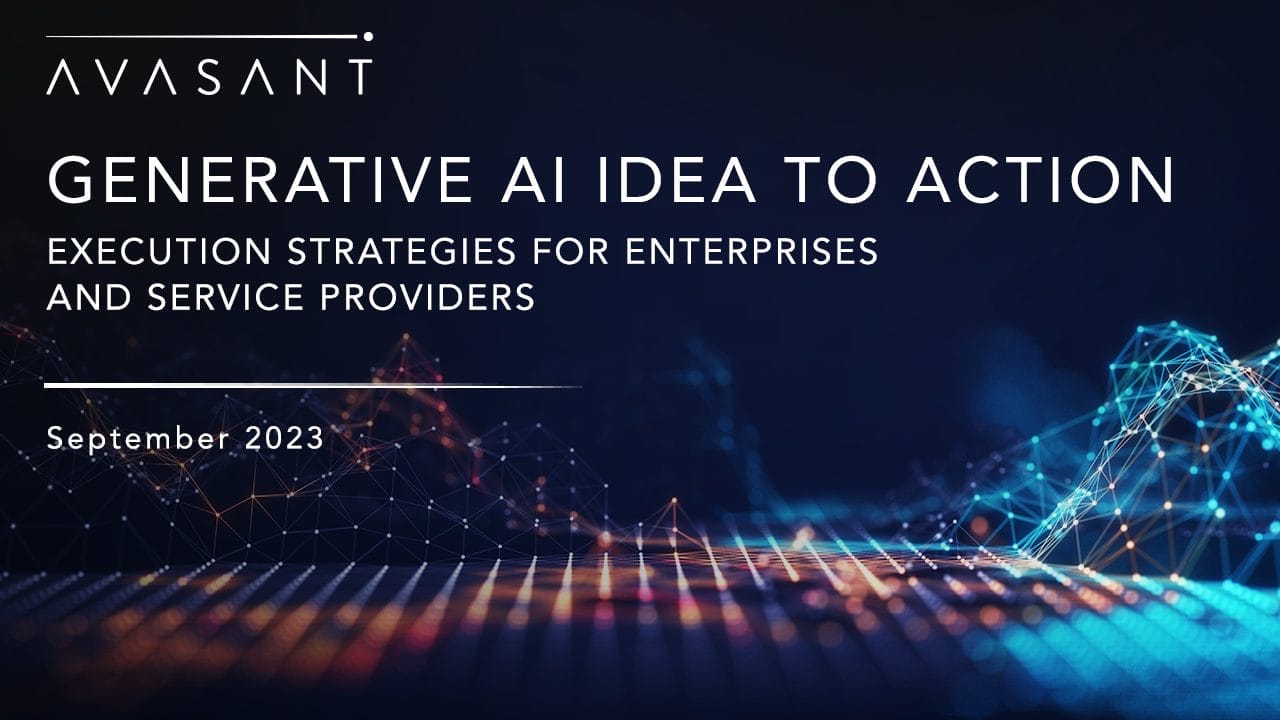The buzz surrounding generative AI has sparked a flurry of activity among enterprises, with service providers pouring substantial investments into this field. This comprehensive report delves into the far-reaching impacts of generative AI, offering insights from the perspective of enterprises and service providers. It sheds light on various critical aspects, including provider delivery models and pricing strategies, enterprise procurement strategies, the influence of generative AI on productivity in IT and business process outsourcing (BPO) services, use cases mature for adoption, and the industries at the vanguard of this technological transformation.
Since the launch of ChatGPT, generative AI has witnessed an exponential surge in adoption across diverse business functions. Enterprises are harnessing its capabilities to generate new revenue streams and enhance productivity. Consequently, a substantial portion of AI funding is now dedicated to generative AI experimentation and proof of concept (POC) development. The increased adoption is fueled by the need to create disruptive user experiences in areas such as productivity enhancement, personalized services, and elevated customer engagement. It is worth noting that generative AI adoption is still at a nascent stage, characterized by bold experimentation and institutional trials led by forward-thinking executives. This environment presents abundant opportunities for service providers to establish themselves as leaders in this domain by building tailored capabilities.
Enterprises are integrating generative AI into their operations following their unique needs, risk assessments, and cost considerations. This integration can take the form of model fine-tuning or the development of proprietary large language models (LLMs). While model fine-tuning is the preferred method for harnessing the potential of LLMs, some companies may opt to create their own LLMs after a meticulous risk-reward evaluation. Service providers actively support enterprises during this transition, tailoring their assistance to match the client’s risk tolerance and application requirements. These providers have assembled proficient teams well-versed in all aspects of generative AI, encompassing consulting, data governance, IP copyright management, application development, and legal considerations. This support is typically offered through a pod-based model.
Generative AI is making a noticeable impact on productivity across a spectrum of functions, including application and software development, IT service desks, contact centers, human resources, and procurement. This has prompted service providers to develop novel strategies to effectively balance enterprise expectations and their own profit margins. In response, most providers are significantly expanding their AI budgets, specifically focusing on developing generative AI assets. This often involves establishing proprietary innovation labs or entering partnerships with technology vendors, positioning these providers at the forefront of generative AI innovation.
Generative AI has ignited enthusiasm in the enterprise landscape, with service providers keen to capitalize on its potential. From the strategies employed by service providers to the transformative impact on enterprise operations, the insights provided by this report will serve as a valuable compass for enterprises and service providers navigating this dynamic terrain, helping them keep pace with the evolution of generative AI.






